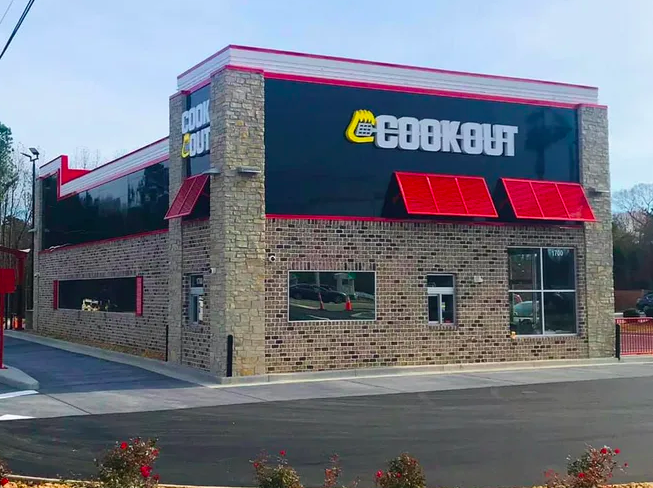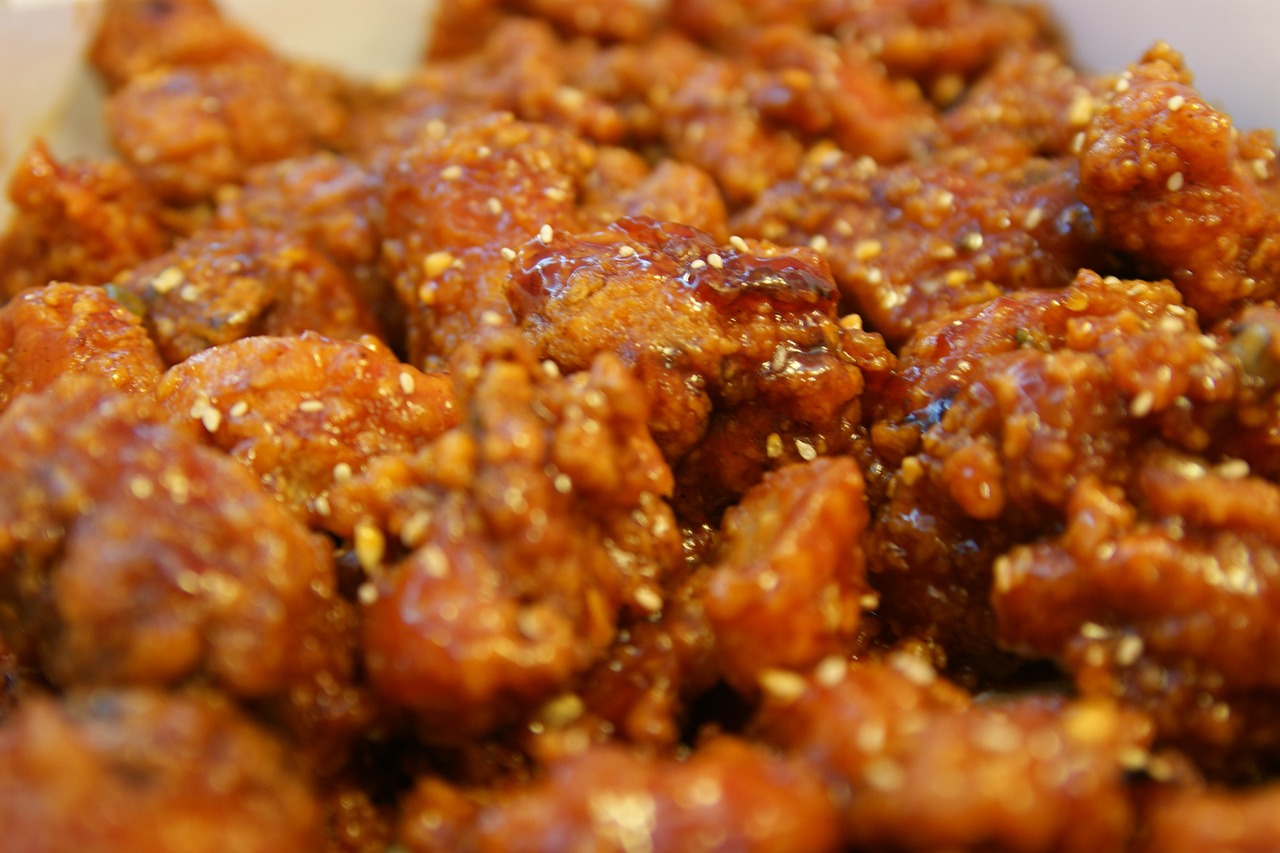Do you want to own one of the second-largest sandwich restaurants in the world only behind Subway? How about a restaurant with a massive menu selection and one known for its famous roast beef? An Arby’s franchise may be the perfect fit for you.
How much will it cost to open an Arby’s franchise? You’ll need to make an initial investment of $336,500 to $927,900 to open the doors to an Arby’s. You’ll also need to prove you’ve got $500,000 in liquid capital and a net worth of at least $1 million. Compared to other companies I’ve reviewed, the startup costs are on par with other nationally recognized food franchises. Take our franchise quiz and find out if Arby’s is the right opportunity for you.
If you’re interested in this franchise opportunity, I dug into the finances so you know what you’re getting yourself into. I share the advantages of this sandwich chain and break down all the fee’s you’ll need to pay as a franchisee below.
Page Contents
Financial Requirements and Fees
Here is a base overview of what the essential finance requirements are for an Arby’s franchise. These numbers only give you a general idea of what you need to start an Arby’s franchise and may not include the all additional costs needed. The costs will change depending on whether or not you decide to open a traditional or a non-traditional model (explained in greater detail below):
| Fees/ Expenses | Amount Needed |
| Liquid Capital | $500,000 |
| Net Worth | $1,000,000 |
| Development Fee | $12,500 for Non-Traditional Sites. The development fee is waived for larger, traditional models. |
| Estimated Total Investment | $336,500 to $927,900 |
Here is a more detailed breakdown of the costs and fees required to open the franchise. Keep in mind that the site costs will vary depending on what type of franchise you open:
| Fee | Low-End Costs | High-End Costs |
| Initial Franchise Fee | $6,250 | $37,500 |
| License Fee | $0 | $37,500 |
| Site Costs | $1,000 | $451,000 |
It is important to note that these are just the initial costs you’ll need to get your business started. There may also be additional fees that are not accounted for in these numbers that depend on the location or type of store you want to open.
Here is a breakdown of more fees and costs required of owning an Arby’s:
| Type of Fee | Amount |
| Royalty Fee | 1% for the first twelve months, 4% after those first twelve months |
| Advertising Marketing Fee | 4% |
| Renewal Fees | 10% |
| Transfer Fee | $17,500 for transfer of first Arby’s restaurant, $2,500 if the outlet franchisee owns at least 50% of one existing License Agreement. |
| Training Program Fee | $1,700 per attendee, but if you are one of the first three managers of your first outlet, the fee is waived. |
| Learning Management System | $59.22 as well as tax for each Arby’s franchise. |
| Approval of Suppliers | Ranges from $2,500 – $10,000 |
Average Sales / Revenue per Year
Due to its popularity in the States and internationally, Arby’s restaurants draw in a total of over $3.9 billion each year. Keep in mind that this is the gross revenue across 3,700+ outlets and doesn’t include employee pay, equipment maintenance, advertising fees, or overhead costs.
Arby’s Franchise Facts
| Total Units | 3,700+ |
| Incorporated Name: | Arby’s Restaurant Group, Inc. |
| Franchising since: | 1965 |
| Industry: | Restaurant |
| Subsector: | Fast Food |
Founded in Boardman, Ohio in 1964, Forrest and Leroy Raffel quickly caught on to the sudden boom in fast-food restaurants opening in the United States. During this fast food service emergence, the two business partners opened a restaurant that offers other foods, not just hamburgers. With its wide array of sandwiches, gyros, curly friends, and milkshakes, Arby’s remains a household name amongst American families.
The franchise is well known for stacked pastrami sandwiches with their slogan “We have the meats”. It is not a rare occurrence to see an Arby’s commercial during a football game, Arby’s signage near a freeway exit, or at an international destination.
With headquarters now located in Sandy Springs, Georgia, Arby’s boasts an impressive number of outlets in five countries outside the United States (Canada, Turkey, Qatar, Kuwait, and the United Arab Emirates). In 2017, the restaurant was heralded as the largest sandwich chain following Subway. As of 2019, the restaurant officially ran 3,472 franchises and continues to grow each and every year. One interesting fact is that the company name, Arby’s Restaurant Group, Inc., was renamed when the company bought out Buffalo Wild Wings in 2018.
How Much Profit Does an Arby’s Franchisee Make Per Year?
Arby’s doesn’t provide their financial statistics online, yet when compared to similar fast-food restaurants in the United States it’s business owners likely make $100,000 – $150,000 a year. This is, however, a rough estimate based on other competing fast-food restaurants such as McDonald’s and Subway.
According to Indeed.com, shift managers are only making $12.12 per hour while assistant managers make $13.14, on average. I expect we’ll see these wages increase over the next year, however. I’ve seen first hand the number of fast food chains offering $11 – $13 starting salary recently. I expect other chains will need to raise their hourly wave to compete.
Not Sure What Franchise to Start? Take Our 7-Minute Franchise Business Quiz!
General managers make, on average, $33,388.80 when calculated as a yearly salary. This is, in general, on the lower end of the salaries general managers usually make in the United States. It does range depending on the location and type of store but is important to note that as a slightly smaller fast-food chain specializing in higher-cost menu items (roast beef, pastrami), the profit margin could be less.
While rising wages is great for employees of a store, it’s not ideal for the owner of a restaurant. Eventually, increased costs will need to be passed onto the consumer in the form of menu price increases.
Things to Consider
Type of Franchise
Arby’s offers two types of franchises. The traditional franchise model is an outlet that opens with a full menu, is freestanding, and provides full customer service. This includes cooks, cashiers, and janitorial services. These outlets are often in plazas, truck stops, convenience stores, malls, and other places along freeways and highly-populated areas. This particular business model has a benefit: the development fee is waived (which usually costs $12,500).
Franchise Review: How Much Does It Actually Cost to Open a Tropical Smoothie Cafe?
The non-traditional model is a franchise with a limited menu, limited size, and reduced customer service. Typically, there will be cooks and only a handful of cashiers. This particular space tends to be in a smaller retail location and has little to no seating. Common locations include: airports, stadiums, amusement parks, sports arenas, casinos, and other institutional facilities that already have seat areas. The non-traditional type of franchise requires less labor, inventory, and customer service.

Arby’s official website.
When choosing which type of franchise to invest in, think about how much liquid capital and net worth you have, and whether or not you can afford to invest in a bigger or smaller outlet. One downside to opening a non-traditional site is that the development fee is not waived, unlike the traditional site. Don’t worry – non-traditional restaurants are already much less expensive than traditional ones, therefore it should not be too much of a financial burden for you if you already have enough net worth and liquid capital. Overall, there are pros and cons of each type of franchise so it is important to weigh each out and see which one is better for you.
Location
In general, Arby’s freestanding outlets tend to occupy places along freeways, highways, and other “quick-stop” transportation locations such as truck and rest stops. This is because Arby’s is commonly frequented by travelers visiting a nearby state or truckers en route to their destination. Under your License Agreement, you can operate one restaurant at a specific location that Arby’s Restaurant Group approves. This location is considered a Protected Area and allows you to operate without competition from nearby Arby’s franchises.
Related Reading: What’s the Total Cost to Open a 7-Eleven? (w/ Fees + Profit)
During the term of the License Agreement, the franchisor cannot own another Arby’s outlet within the Protected Area of the first outlet. If the franchise is a traditional area, the Protected Area is one mile from the freestanding building. If the franchise is non-traditional, the franchisor can not grant a Protected Area because of how small the site is. This shouldn’t be a deterrent for business owners, however, because it is unlikely for another Arby’s franchise owner to want to open in close vicinity to your business.
Finance
Unfortunately, Arby’s Restaurant Group does not give financial aid to franchisees. This means that if you run into financial trouble, it is up to you to fix the situation. You are, however, eligible for an SBA (Small Business Administration) loan through the SBA’s Franchise Registry.
Remember that in order to open an Arby’s outlet, you must have $500,000 in liquid capital, a net worth of $1,000,000, and a plan to invest between $336,500 and $927,900 into the business. These costs may seem high if you have never opened a business before but this range is typical for opening a well-known franchise. If you are looking to open the franchise with financial assistance, Arby’s may not be the best choice for you.
Advantages of Arby’s Franchise
Arby’s restaurants have a variety of advantages. One benefit, for example, is the broad menu selection. While many fast-food restaurants offer a limited amount of food, Arby’s serves wraps, sandwiches, salads, fries, shakes, and more. They are known for their popular roast beef sandwich, a favorite amongst their frequent guests. They also have seasonal and promotional items that follow current trends to keep customers coming back. Even though Arby’s is a fast-food chain, they offer selections that many other restaurants do not.
Arby’s franchise buildings are contemporary, prominent, and constructed in a Pinnacle design. This means that the building itself stands out amongst other non-descript buildings and is easily adaptable to changing design styles as the years go by.
Franchise Review: How Much Does It Really Cost to Start a Kona Ice Franchise?
The choice between traditional and non-traditional sites is another benefit to this restaurant. You can decide which model suits your financial state and invest in the model that suits those needs. Often, a smaller, non-traditional outlet will be better suited for people looking for a less labor-heavy restaurant. In addition, the opening development fee of $12,500 is waived if you decide to open a traditional model.
The Arby’s company culture is impressive in and of itself. Their core values of dreaming big, working hard, getting things done quickly, fair play, making differences, and having fun, are vital in the success of their business owners and employees. If you have similar core values, this company may be a good fit for you.
Main Advantages
- Broad menu selection
- Eye-catching design
- Multiple outlet models to choose from
- Uplifting company culture
Challenges of Arby’s Franchise
One challenge the franchise has is that it does not offer direct or indirect financing. If you are to experience a financial hurdle, it will be up to you to solve it. You are, however, able to apply for an expedited Small Business Administration loan from the SBA, if needed.
Another challenge involves the non-traditional outlet model. Whereas traditional outlets have a Protected Area Agreement, smaller, non-traditional sites do not. This means that if you open your non-traditional restaurant there is no promise of nearby competition avoiding your area. The chance of other non-traditional Arby’s restaurants opening up nearby is higher and therefore may draw customers away from your location.
It’s also important to note that Arby’s may have heavy competition from other fast-food restaurants in the area. Even though traditional outlets have a Protected Area Agreement for their own stores, you may be located footsteps away from another fast-food restaurant. While Arby’s does have a following and is becoming more well-known, they are a slightly smaller and less popular fast-food chain that may require more comprehensive advertising.
Also, if you plan on opening a non-traditional version of Arby’s, you will have to pay the $12,500 development fee that is usually waived for traditional outlets. This shouldn’t be a huge burden, however, considering the lower cost it takes to open and operate a non-traditional Arby’s. It is important to note for you if funds are tight, especially since Arby’s does not offer financial assistance.
Main Challenges
- No financial assistance guaranteed
- No Protected Area Agreement for non-traditional sites
- No waived fee for non-traditional sites
- Rising cost to pay employees
Is the Arby’s Franchise Right for You?
Now that you know everything about opening an Arby’s franchise, it’s time to decide whether or not this restaurant is the right one for you. Ask yourself the following questions to see if you can commit to the franchisor’s requirements:
Are you passionate about the fast-food service industry? Arby’s is looking for candidates who are very passionate about team building in a fast-paced, restaurant setting. It’s vital that you already have restaurant and management experience as this will improve your odds of success. You’ll also have a much clearer expectation of what it takes to operate a restaurant. Arby’s does offer training for their franchise owners, but overall they do prefer owners that have management experience.
Are you willing to open multiple outlets? Ideally, Arby’s wants you to open at least three of the restaurants per development agreement. This may seem daunting, but it will only elevate your chance for business and financial success. But if you want to make the big bucks in the world of franchising, it’s all about taking ownership of multiple units.
Related Reading: How Much Does It Really Cost (w/ Fees) to Open a KFC Franchise?
Do you have the financial means to do so? Opening a franchise is a hefty endeavor, not only in terms of physical and mental labor but also in terms of finances. If you do not have the liquid capital and net worth to open a franchise as large as an Arby’s, consider joining forces with a business partner or choosing a different, more affordable franchise like Kona Ice.
Do you live in an area most conducive for Arby’s customers? Remember that most of Arby’s customers are families traveling on road trips or truckers driving long distances. It is all too common to spot an Arby’s sign on freeway exits and there is a good reason for it too – quick-stop fast food is ideal. If you live in a large city or a rural area, Arby’s may not be the best option for you (unless you are willing to relocate).
Asking yourself all of these necessary questions will only help you narrow down your possible business options until you find the right investment for you. Restaurant experience, passion, willingness to expand, adequate financial resources, and ideal location are important aspects of opening and operating an Arby’s.
If you decide to open and operate an Arby’s, prepare to work in a fun, fast-paced, family-oriented environment brimming with high possibilities of financial success. Click here to learn more about investing in an Arby’s franchise at the official company website.





